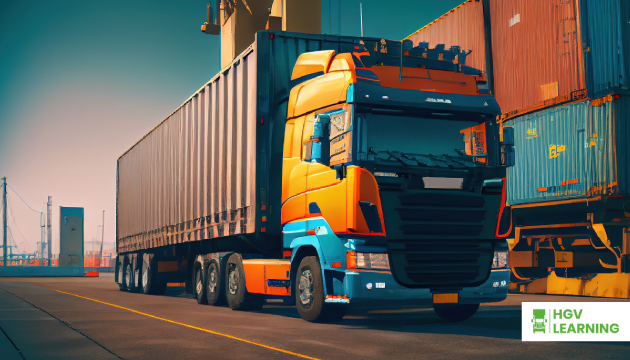Related Articles

28/10/2025
Preventing HGV Overloading: Legal Limits and On-the-Road Consequences

21/10/2025

If you’ve been driving a van for work or personal use and are now considering a career shift into heavy goods vehicle (HGV) driving, you’re not alone. Many drivers make the transition every year, seeking better pay, new challenges, and long-term career stability. This guide will walk you through everything you need to know about upgrading from a Category B licence (for vans and cars) to a full HGV licence. Whether you aim to drive a 7.5-tonne vehicle or an articulated lorry, we explain the process clearly so you can get started with confidence.
A standard UK driving licence, known as a Category B licence, allows you to drive vehicles up to 3.5 tonnes. This includes most vans used for deliveries, trade work, or general transport. While it offers a good entry point into the transport sector, its limitations mean that you can’t legally drive larger vehicles such as HGVs used in logistics, construction, or long-distance haulage.
If your current role involves van driving and you want to explore higher-paying opportunities, moving up to an HGV licence can open new doors.
Switching from a van to HGV licence can bring a range of benefits. HGV drivers often enjoy increased earnings, more varied work, and access to a broader job market. There is also a significant demand for qualified HGV drivers in the UK, especially post-Brexit and with ongoing supply chain pressures.
Additionally, gaining an HGV licence can help you take on more responsibility and potentially advance into supervisory or specialised driving roles.
Many drivers also find HGV roles more rewarding due to the opportunity to travel further, operate more advanced vehicles, and work independently. The sense of progression from van driving to handling heavy goods vehicles is a natural step for those looking to elevate their career in the transport industry.
Depending on the type of vehicle you wish to drive, different HGV licence categories are available:
Choosing the right licence depends on your career goals and the types of jobs you’re aiming for. Our team at HGV Learning can help you determine which route best suits your needs.
Switching from a van licence to an HGV licence involves several steps, each of which is essential to ensure you’re properly qualified and legally compliant.
Before applying for any HGV provisional licence, you must pass a medical examination. This includes eyesight and general health checks to confirm you are fit to drive larger vehicles. A doctor must complete the DVLA’s D4 medical form.
You then need to apply for a provisional HGV licence using the DVLA’s D2 form. The provisional licence is required before you can begin training or take your theory tests.
Visit the DVLA for up-to-date application forms and information.
This includes two parts:
Preparation is key. Consider reading our guide on how to get an HGV licence for more tips. You may also find our article on finding HGV training near you helpful.
Once you pass the theory test, you’ll need to undergo practical training with a qualified instructor. Training will cover:
We offer training programmes through HGV Learning with experienced trainers and modern vehicles to give you the best possible chance of success.
Your training will culminate in a practical driving test administered by the DVSA. This includes on-road driving, reversing into a bay, and demonstrating control under varied road conditions. You’ll also be assessed on vehicle safety knowledge and how to handle real-world challenges.
If you plan to use your HGV licence for commercial work, you will also need to obtain a Driver Certificate of Professional Competence (CPC). This includes:
Upgrading to an HGV licence involves costs such as medical exams, training fees, and test charges. While it represents an investment, many drivers recoup the cost quickly through increased earnings. We offer advice on funding options and flexible payment plans to support you.
With an HGV licence, you gain access to a wide variety of roles across logistics, construction, retail, and emergency services. Whether you want local routes or long-distance hauls, there’s a demand for skilled HGV drivers throughout the UK. This career change can also be the gateway to specialisations like ADR transport or HIAB operation.
If you’re curious about different HGV job types or locations, explore our content on HGV jobs in the UK for more insights.
At HGV Learning, we specialise in helping drivers upgrade from van licences to HGV licences. Our tailored approach ensures you receive the right guidance at every stage. From your medical exam to your final test, we make the journey as smooth as possible.
We also offer ongoing support to help you secure employment and maintain your CPC qualification through periodic training.
Making the switch from a van to HGV licence is a smart move for those looking to advance their driving careers. With the right training, support, and preparation, you can transition smoothly into a rewarding and in-demand profession.
Contact HGV Learning today to take the first step toward a future in professional HGV driving.

28/10/2025

21/10/2025
Complete the form below and we’ll contact you asap.

